1. World Health Organization. Global tuberculosis report 2012. WHO/HTM/TB/2012.6. 2012. Geneva: World Health Organization.
2. Hong YP, Kim SJ, Lew WJ, Lee EK, Han YC. The seventh nationwide tuberculosis prevalence survey in Korea, 1995. Int J Tuberc Lung Dis. 1998; 2:27–36. PMID:
9562108.
3. Korean Center for Disease Control and Prevention. Annual report on the notified tuberculosis patients in Korea, 2001. 2002. Seoul: Korean Center for Disease Control and Prevention.
4. Korean Center for Disease Control and Prevention. Annual report on the notified tuberculosis patients in Korea, 2002. 2003. Seoul: Korean Center for Disease Control and Prevention.
5. Korean Center for Disease Control and Prevention. Annual report on the notified tuberculosis patients in Korea, 2003. 2004. Seoul: Korean Center for Disease Control and Prevention.
6. Korean Center for Disease Control and Prevention. Annual report on the notified tuberculosis patients in Korea, 2004. 2005. Seoul: Korean Center for Disease Control and Prevention.
7. Korean Center for Disease Control and Prevention. Annual report on the notified tuberculosis patients in Korea, 2005. 2006. Seoul: Korean Center for Disease Control and Prevention.
8. Korean Center for Disease Control and Prevention. Annual report on the notified tuberculosis patients in Korea, 2006. 2007. Seoul: Korean Center for Disease Control and Prevention.
9. Korean Center for Disease Control and Prevention. Annual report on the notified tuberculosis patients in Korea, 2007. 2008. Seoul: Korean Center for Disease Control and Prevention.
10. Korean Center for Disease Control and Prevention. Annual report on the notified tuberculosis patients in Korea, 2008. 2009. Seoul: Korean Center for Disease Control and Prevention.
11. Korean Center for Disease Control and Prevention. Annual report on the notified tuberculosis patients in Korea, 2009. 2010. Cheonwon: Korean Center for Disease Control and Prevention.
12. Korean Center for Disease Control and Prevention. Annual report on the notified tuberculosis patients in Korea, 2010. 2011. Cheonwon: Korean Center for Disease Control and Prevention.
13. Korean Center for Disease Control and Prevention. Annual report on the notified tuberculosis patients in Korea, 2011. 2012. Cheonwon: Korean Center for Disease Control and Prevention.
14. Lew WJ, Lee EG, Bai JY, Kim HJ, Bai GH, Ahn DI, et al. An Internet-based surveillance system for tuberculosis in Korea. Int J Tuberc Lung Dis. 2006; 10:1241–1247. PMID:
17131783.
15. Park YS, Hong SJ, Boo YK, Hwang ES, Kim HJ, Cho SH, et al. The national status of tuberculosis using nationwide medical records survey of patients with tuberculosis in Korea. Tuberc Respir Dis. 2012; 73:48–55.

16. Hong SJ, Park YS, An H, Kang SM, Cho EH, Shin SS. Factors leading to under-reporting of tuberculosis in the private sector in Korea. Int J Tuberc Lung Dis. 2012; 16:1221–1227. PMID:
22794136.

17. Yoo JW, Jo KW, Kim MN, Lee SD, Kim WS, Kim DS, et al. Increasing trend of isolation of non-tuberculous mycobacteria in a tertiary university hospital in South Korea. Tuberc Respir Dis. 2012; 72:409–415.

18. Lee SK, Lee EJ, Kim SK, Chang J, Jeong SH, Kang YA. Changing epidemiology of nontuberculous mycobacterial lung disease in South Korea. Scand J Infect Dis. 2012; 44:733–738. PMID:
22720876.

19. Statistics Korea [Internet]. cited 2012 Oct 30. Daejeon: Statistics Korea;Available from:
http://kostat.go.kr/.
20. Mori T, Leung CC. Tuberculosis in the global aging population. Infect Dis Clin North Am. 2010; 24:751–768. PMID:
20674802.

21. Dye C, Williams BG. The population dynamics and control of tuberculosis. Science. 2010; 328:856–861. PMID:
20466923.

22. Vynnycky E, Borgdorff MW, Leung CC, Tam CM, Fine PE. Limited impact of tuberculosis control in Hong Kong: attributable to high risks of reactivation disease. Epidemiol Infect. 2008; 136:943–952. PMID:
17678555.

23. Vesosky B, Turner J. The influence of age on immunity to infection with
Mycobacterium tuberculosis. Immunol Rev. 2005; 205:229–243. PMID:
15882357.
24. Rajagopalan S. Tuberculosis and aging: a global health problem. Clin Infect Dis. 2001; 33:1034–1039. PMID:
11528577.

25. Rajagopalan S, Yoshikawa TT. Tuberculosis in the elderly. Z Gerontol Geriatr. 2000; 33:374–380. PMID:
11130191.

26. Lee JH, Han DH, Song JW, Chung HS. Diagnostic and therapeutic problems of pulmonary tuberculosis in elderly patients. J Korean Med Sci. 2005; 20:784–789. PMID:
16224152.

27. Thrupp L, Bradley S, Smith P, Simor A, Gantz N, Crossley K, et al. Tuberculosis prevention and control in long-term-care facilities for older adults. Infect Control Hosp Epidemiol. 2004; 25:1097–1108. PMID:
15636299.

28. Hauer B, Brodhun B, Altmann D, Fiebig L, Loddenkemper R, Haas W. Tuberculosis in the elderly in Germany. Eur Respir J. 2011; 38:467–470. PMID:
21804163.

29. Yamagishi F. Tuberculosis in the elderly. Kekkaku. 2004; 79:481–486. PMID:
15484832.
30. Lo HY, Chou P, Yang SL, Lee CY, Kuo HS. Trends in tuberculosis in Taiwan, 2002-2008. J Formos Med Assoc. 2011; 110:501–510. PMID:
21783019.

31. Research Institute of Tuberculosis. JATA. Tuberculosis annual report 2009. Series 4. Elderly TB. Kekkaku. 2011; 86:737–741. PMID:
21922784.
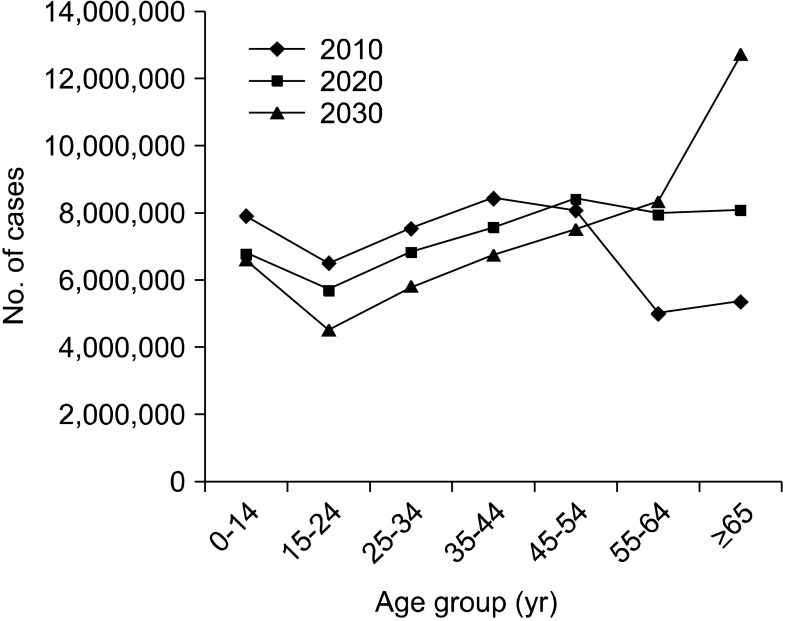




 PDF
PDF ePub
ePub Citation
Citation Print
Print



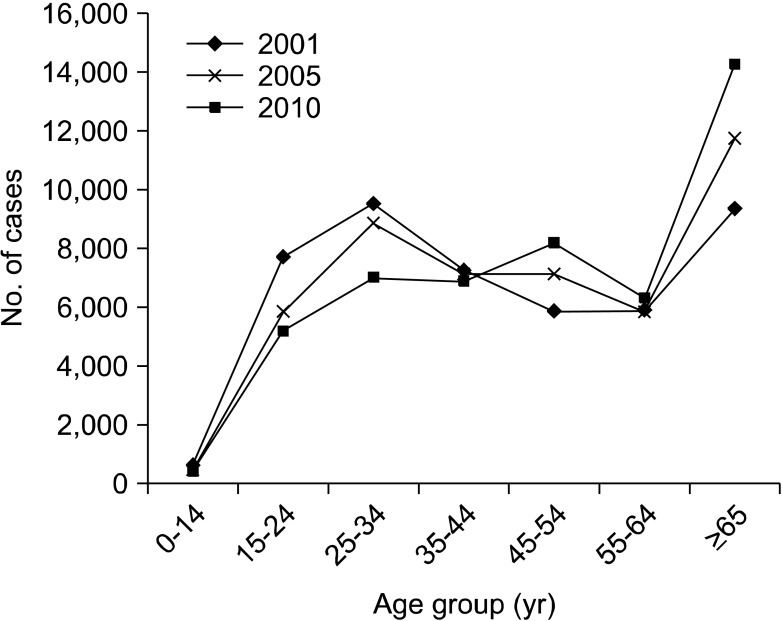
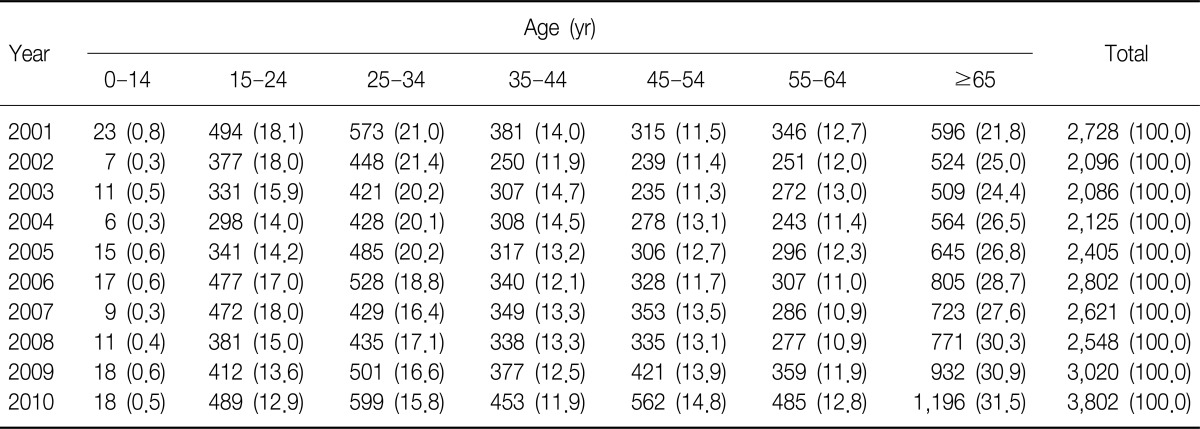
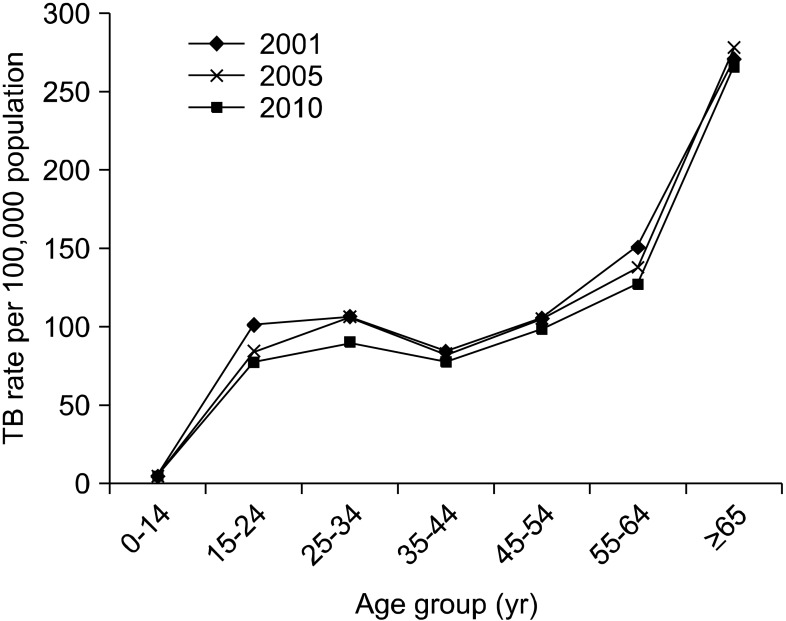
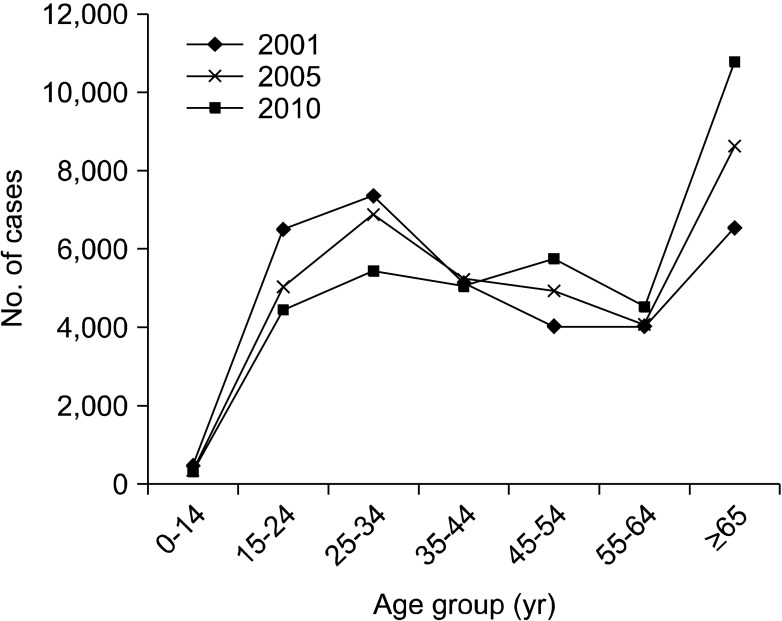

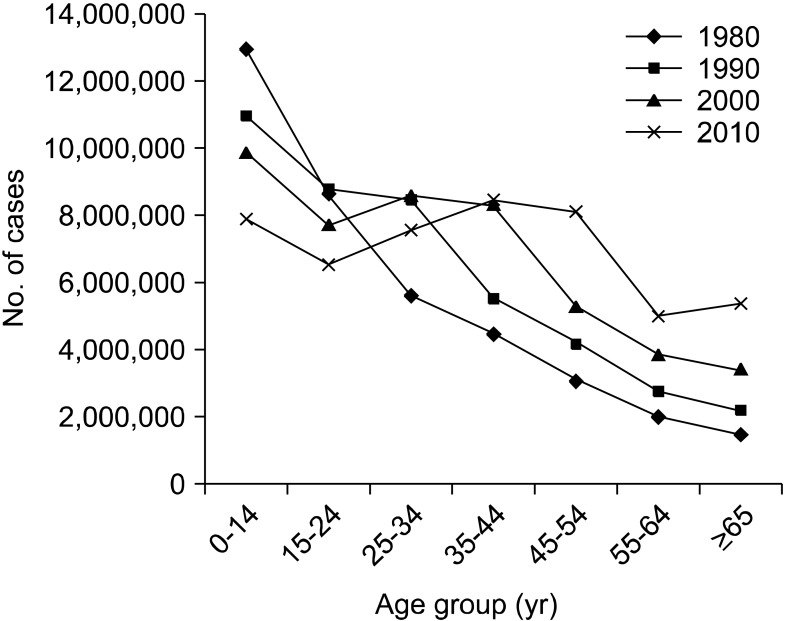
 XML Download
XML Download